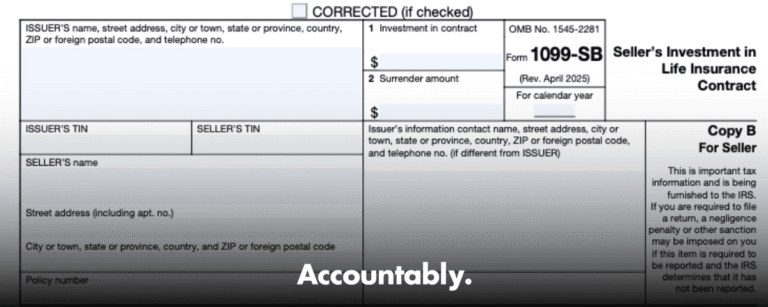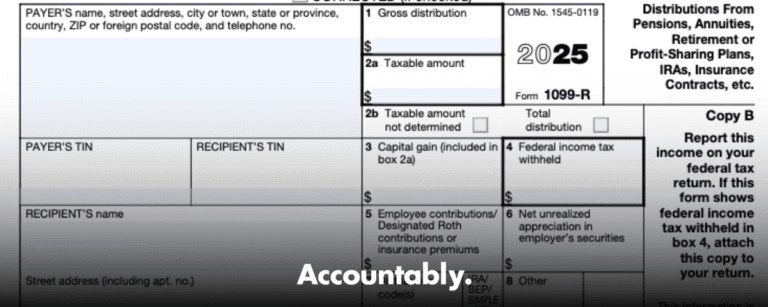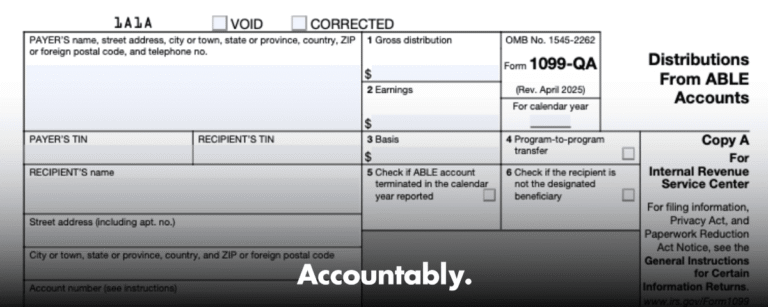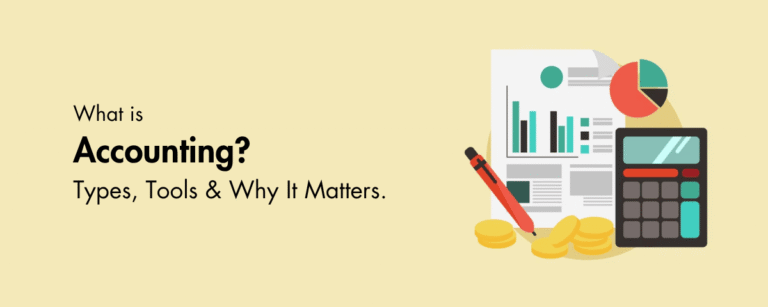Scale Your CPA Firm Without Adding Headcount
Build your offshore team that works your way, trained, compliant, and white-labeled under your firm.
👉 Book a Discovery Call
Key idea, file and furnish Form 1099‑NEC by January 31 each year, report $600 or more in nonemployee compensation in Box 1, and e‑file if you file 10 or more information returns in total.
Key takeaways
- You must issue a 1099‑NEC for each payee you paid $600+ for services in your trade or business, report in Box 1, and furnish Copy B to the payee and file with the IRS by January 31. For the 2025 payment year, that means forms are due Monday, February 2, 2026, since January 31, 2026 falls on a Saturday.
- If you file 10 or more information returns in the year, you must e‑file. The 10‑return rule is aggregated across most return types, not per form.
- Always collect a signed Form W‑9 before paying a contractor. If the TIN is missing or incorrect, begin backup withholding at 24% and report withheld tax in Box 4.
- Attorneys are special, fees to attorneys go on 1099‑NEC, and certain attorney gross proceeds go on 1099‑MISC Box 10, even for corporations.
- Penalties are indexed. For returns due in 2026, penalties are generally $60 if corrected within 30 days, $130 if corrected by August 1, and $340 after August 1, with $680 for intentional disregard.
- Heads up for planning, the reporting threshold rises to $2,000 starting with payments made in 2026, then adjusts annually for inflation beginning in 2027. Keep using $600 for 2025 payments.
What is Form 1099‑NEC
Form 1099‑NEC reports nonemployee compensation you paid in your trade or business, typically $600 or more to independent contractors, freelancers, directors, and similar service providers. Enter the total in Box 1, and if you withheld federal income tax under backup withholding rules, report it in Box 4. You must furnish Copy B to the payee and file with the IRS by January 31.
Most recipients report amounts from 1099‑NEC on Schedule C and, if net earnings are $400+, on Schedule SE for self‑employment tax. That is why your accuracy matters, incorrect totals and TIN mismatches can trigger notices for both sides.
Hundreds of Firms Have Already Used This Framework.
Join the growing list of CPA and accounting firms using Accountably’s Offshore Playbook to scale faster.
💬 Get Your FREE Playbook
👉 Visit Jugal Thacker’s LinkedIn
Send him a connection request and message “Playbook” to get your copy.
2026 threshold change, plan now and avoid surprises
Congress raised the 1099 reporting threshold, effective for payments made after December 31, 2025. Starting with the 2026 calendar year, the threshold for 1099‑NEC and most 1099‑MISC boxes moves from $600 to $2,000, and then it will be indexed for inflation beginning in 2027. This change does not affect the 2025 forms you file in early 2026, you still apply the $600 rule for 2025 payments.
What this means for you:
- Keep using the $600 threshold for all 2025 payments due by February 2, 2026.
- Update your policies, software thresholds, and vendor onboarding checklists for 2026 so Box 1 triggers at $2,000 instead of $600.
- Backup withholding rules still apply when a payee fails to provide a valid TIN. If you withhold, you must issue a 1099‑NEC even if payments are below the dollar threshold.
Who should receive Form 1099‑NEC
You must issue a 1099‑NEC to each nonemployee you paid $600+ for services in your trade or business during the year, including individuals, partnerships, estates, and in some cases corporations. You must also issue a 1099‑NEC to any payee subject to backup withholding, regardless of amount. Do not issue 1099‑NEC to your W‑2 employees.
Improve Margins Without Compromising Quality
Offshore staffing helps firms deliver more, scale faster, and stay compliant, without adding local headcount.
👉 Book a Discovery CallSpecial rule for attorneys
Two common cases trip people up:
- Fees for legal services, report on 1099‑NEC Box 1, even if paid to an incorporated law firm.
- Gross proceeds paid to an attorney, for example settlement proceeds, report on 1099‑MISC Box 10. These attorney rules override the normal corporate payee exception.
Quick comparison, NEC versus MISC
- 1099‑NEC, services by nonemployees, fees, commissions, bonuses, directors, plus backup withholding in Box 4 when applicable.
- 1099‑MISC, rents, royalties, prizes, medical payments, and gross proceeds to attorneys. Both forms have their own due dates and boxes, so map each payment type correctly before year end to avoid duplicate or missing reporting.
Reminder, for 2025 payments the 1099‑NEC filing and furnishing deadline is Monday, February 2, 2026. In other years, it is generally January 31.
Examples of nonemployee compensation to report
If you paid $600+ during the year for services in your business, you likely report it on 1099‑NEC Box 1. Typical examples include independent bookkeepers, designers, developers, fractional CFOs, marketing contractors, and nonemployee directors. Commissions, referral fees, and performance bonuses to independent sales agents also count.
Professional service fees
Professional service fees are the most common category. Pay a nonemployee accountant, consultant, engineer, or designer $600+ during the calendar year, report it in Box 1. Method of payment does not matter, cash, check, ACH are all reportable. Corporate status usually removes 1099 reporting, however, the corporate exception does not apply to legal services, attorney fees remain reportable. Collect a W‑9 up front to capture the correct name and TIN. If you had to apply backup withholding, file a 1099‑NEC even if total payments are under $600.
Commissions and bonuses
Commissions and bonuses paid to independent agents belong on 1099‑NEC Box 1 when total payments reach $600 for the year. Track these payments by payee so you do not miss the threshold or double count advances and chargebacks. Backup withholding overrides thresholds, if you withheld, you must file.
Mixed invoices, services plus materials
If a contractor bills for both labor and materials, you generally report the entire invoice if the service component is present and the total paid reaches the reporting threshold. Keep consistent documentation in your workpapers so reviewers understand what you included and why. When in doubt, align with your CPA’s policy and the instructions.
Information you need to complete the form
You will need precise payer and recipient details, the total nonemployee compensation paid during the calendar year, any backup withholding taken, and the correct state reporting elements if your state requires them. Collect the payee’s legal name and TIN on Form W‑9 before the first payment, and validate the TIN when possible to reduce notices and withholding errors.
Payer and recipient details
Verify your legal name, mailing address, phone number, and EIN exactly as registered. From the payee’s W‑9, capture the legal name, address, tax classification, and correct TIN. Confirm whether the payee is subject to backup withholding, and document proof if you had to withhold, for example a CP2100 notice or TIN missing. Keep copies of W‑9s, invoices, payment logs, withholdings, and any state IDs used for reporting.
Payment amounts and dates
Use cash‑basis dates for information returns, amounts paid from January 1 to December 31. Report the total nonemployee compensation in Box 1. Do not include personal, non‑business payments, advances not yet paid, or accruals. If you discover an error after furnishing or filing, issue a corrected 1099‑NEC promptly.
How and when to file with the IRS
You must furnish Copy B to recipients and file with the IRS by January 31. For 2025 payments, the due date is February 2, 2026. If you file 10 or more information returns in total for the calendar year, the IRS requires electronic filing.
Filing methods that work in practice
- IRIS Taxpayer Portal, free IRS e‑file for the 1099 series, supports manual entry and CSV uploads, corrections, extensions, and quick acknowledgments. Great for small and midsize filers.
- IRIS A2A, software‑to‑IRS transmission for high volume, requires an IRIS TCC and schema testing, ideal for firms and software providers.
- FIRE, legacy e‑file platform, still used for many information returns, but IRIS is now the IRS’s modern system for the 1099 series. If you are new, start with IRIS.
Corrections and extensions
If information is wrong, file a corrected 1099‑NEC as soon as possible. You can request more time to file with Form 8809. There is no automatic extension to furnish recipient copies, however you may request up to 30 additional days to furnish by faxing Form 15397 before the due date.
Quick reference table
| Action | Details |
| Determine method | E‑file if you must file 10+ information returns in aggregate. |
| E‑file options | Use the free IRIS Taxpayer Portal or IRIS A2A. |
| Paper filing | If eligible, mail Copy A with Form 1096, keep Copy C, but remember the 10‑return e‑file rule. |
| Corrections | File corrected returns promptly through IRIS or paper, depending on how you filed. |
| Extensions | File Form 8809 to extend IRS filing, fax Form 15397 to extend furnishing up to 30 days if approved. |
Recipient delivery deadlines and e‑delivery consent
You must furnish Copy B of the 1099‑NEC to each recipient by January 31. You may deliver electronically only if the recipient gives clear, affirmative consent in a way that proves they can access the statement in the same format you will provide. Your disclosure must state how to withdraw consent, how to request a paper copy, and how long the form will be available. Keep the e‑statement online through at least October 15 of the following year, and notify recipients when the statement is posted.
If January 31 is not a business day, the due date moves to the next business day, for 2025 payments the due date is February 2, 2026.
Penalties for late or incorrect filing
Penalties increase the later you correct. For returns due in 2025 the amounts are $60 within 30 days, $130 by August 1, and $330 after August 1, with $660 for intentional disregard. For returns due in 2026, the after‑August 1 penalty increases to $340 and intentional disregard is $680 per return. Small businesses have lower maximums, but there is no maximum for intentional disregard. Reasonable cause relief may apply if you document why you could not file on time.
A simple penalty‑avoidance checklist
- Collect W‑9s before first payment and validate TINs.
- Reconcile totals monthly, not only in January.
- Lock a dry run by mid‑January, then send forms.
- Use IRIS acknowledgments to confirm IRS receipt.
Coordination with Form 1099‑MISC
Split correctly to avoid mismatches:
- Put nonemployee service fees on 1099‑NEC Box 1.
- Put rents, royalties, prizes and awards, medical payments, and certain other amounts on 1099‑MISC.
- Put attorney gross proceeds on 1099‑MISC Box 10, and attorney service fees on 1099‑NEC Box 1. Deadlines differ by box on 1099‑MISC, while the 1099‑NEC must be filed and furnished by January 31.
State reporting, a quick note
Several states require direct 1099‑NEC reporting even if they participate in the IRS Combined Federal, State Filing program, and rules can change. Check your state’s current guidance or your e‑file provider’s state matrix, and if you rely on CF/SF, remember the IRS forwards data on a schedule that may not satisfy every state’s deadline. When in doubt, verify with your state DOR.
Compliance note
This guide reflects IRS instructions and notices reviewed in 2025, including general instructions for Forms 1099, the 10‑return e‑file rule, backup withholding at 24%, consent rules for electronic furnishing, and penalty amounts for returns due in 2025 and 2026. Always confirm current‑year instructions before you file.
Tax reporting for recipients and self‑employment taxes
If you receive a 1099‑NEC, treat the amount in Box 1 as business income. Report it on Schedule C or your business return, deduct ordinary and necessary expenses, and pay self‑employment tax on net earnings of $400+ using Schedule SE, along with income tax and any state taxes. Keep detailed records for expenses such as mileage, supplies, and home office, and reconcile client totals to your books in case of IRS matching questions.
Estimated taxes
Independent contractors should make quarterly estimated payments that cover both income tax and self‑employment tax. Revisit estimates during the year when income changes, this is the simplest way to avoid underpayment penalties at filing time.
Backup withholding and special cases
If a payee does not furnish a valid TIN on a W‑9, or the IRS notifies you that the TIN is incorrect, begin backup withholding at 24% immediately. Report the withheld amount in Box 4 of the 1099‑NEC and deposit via your normal federal tax deposit schedule using Form 945 rules. Continue withholding until the payee cures the issue. Backup withholding applies even when payments are below the dollar threshold.
Common triggers and what to do:
- Missing TIN at payment time, start withholding and request a W‑9.
- CP2100 or CP2100A notice, send a B‑Notice and begin withholding within 30 business days if not resolved.
- Awaiting‑TIN rules, remember the 60‑day relief does not apply to nonemployee compensation.
Tools and e‑filing options that reduce errors
- IRIS Taxpayer Portal, free, browser‑based, supports CSV uploads, corrections, and extensions. Most filers can get started quickly and download recipient copies for distribution.
- IRIS A2A, API transmission for high volume. Requires IRIS TCC and testing, ideal for firms that want automation and large batch throughput.
- Legacy FIRE, still in use for many information returns, but the IRS positions IRIS as the platform for the 1099 series going forward. New filers should favor IRIS.
Practical filing flow we see work well
- Collect and validate W‑9s, set vendor as reportable or exempt in your system.
- Reconcile payable totals monthly.
- Create a January “pre‑close” report and fix gaps in mid‑month.
- E‑file through IRIS, monitor acknowledgments, and push recipient copies via secure portal with consent or by mail.
Where Accountably helps, only if you need it
If your firm hits a January crunch every year, the root cause is usually delivery, not demand. We integrate trained offshore teams with SOP‑driven workpapers, layered review, and turnaround SLAs so your staff can spend less time in review and more time advising clients. Teams work in your systems, for example QuickBooks, Xero, CCH Axcess, UltraTax, Karbon, TaxDome, and Suralink, with continuity plans that keep deadlines on track even if someone is out. If you want that structure for 1099 season, we can help, and if not, use the checklists above to tighten your process.
Accountably operates as a U.S.‑led offshore partner with three priorities, capacity without chaos, workflow discipline, and review protection.
FAQs
What is Form 1099‑NEC for, in one line?
It reports nonemployee compensation you paid in your business, generally $600+, and you must furnish it to the payee and file with the IRS by January 31.
Do I attach the 1099‑NEC to my own tax return?
No. Payers file 1099‑NEC with the IRS and furnish copies to recipients. Recipients use the amounts to prepare their returns, usually Schedule C and Schedule SE for self‑employment tax.
How much tax will I pay on 1099‑NEC income?
Contractors pay income tax on net profit plus self‑employment tax, typically 15.3% on most self‑employment income, and may owe state taxes. Keep records and make quarterly estimated payments to avoid underpayment penalties.
Who must receive a 1099‑NEC from my business?
Issue to each contractor you paid $600+ for services during the year, and to any payee where you withheld backup tax, regardless of amount. Remember the attorney rules and the separate 1099‑MISC Box 10 for gross proceeds to attorneys.
Is e‑delivery allowed for recipient copies?
Yes, if the recipient clearly consents in a way that proves they can access the form in the format provided. Your notice must explain how to get a paper copy, how to withdraw consent, and how long the form will be available.
What changed for 2026?
Starting with payments made in 2026, the 1099‑NEC and most 1099‑MISC boxes move to a $2,000 threshold, indexed for inflation beginning in 2027. Keep using $600 for 2025 payments filed in early 2026.
Action plan and checklist
- Collect W‑9s from every vendor before first payment, verify TINs when possible.
- Tag vendors as reportable or exempt in your accounting system.
- Reconcile contractor payments monthly so year‑end is a push of a button.
- Prepare a mid‑January draft file, then resolve mismatches and missing W‑9s.
- E‑file through IRIS, confirm acknowledgments, and furnish copies by January 31.
- If something slips, use Form 8809 for IRS filing time and Form 15397 to request more time to furnish statements.
Final word
You can make 1099 season calm, not chaotic, with three habits, collect W‑9s early, reconcile monthly, and file through IRIS. Keep the $600 rule for 2025 payments, then update your policies for the $2,000 threshold beginning in 2026. If your internal team is stretched, you can still keep control of quality and deadlines by tightening your SOPs, using structured workpapers, and scheduling layered reviews in January. That is how firms protect margins and client trust year after year.
Simplify Delivery, Improve Margins, Stay in Control.
Offshore support that works exactly like your in-house team.
💼 Let’s Talk







